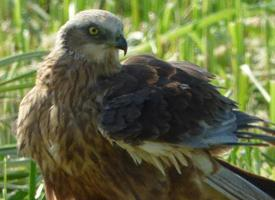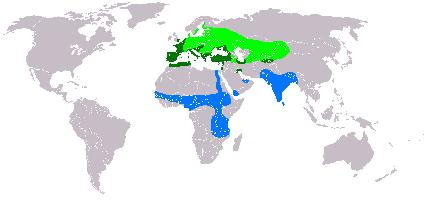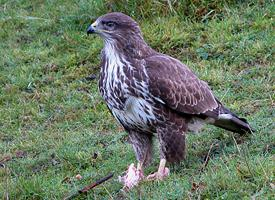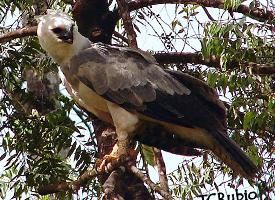
Starea de conservare
| Amenințat |
Descrierea animalului
The Western Marsh Harrier (Circus aeruginosus) is a captivating bird of prey, known for its distinctive appearance, adept hunting skills, and significant role in various ecosystems. This raptor belongs to the family Accipitridae, which includes hawks, eagles, and kites. The species is widely distributed across Europe, Asia, and parts of Africa, showcasing its adaptability to different habitats, primarily thriving in wetlands, marshes, and reed beds.Physical Description:
The Western Marsh Harrier is a medium-sized bird, with a wingspan ranging from 115 to 130 cm (45 to 51 inches) and a body length of about 48 to 56 cm (19 to 22 inches). It exhibits sexual dimorphism, meaning males and females have distinct physical appearances. Males have a striking plumage with a mix of grey, brown, and black feathers, and a characteristic white rump that is visible during flight. Their wings are broad and rounded, designed for low, gliding flights over marshlands. Females, on the other hand, are larger than males and have a more uniform brown coloration with a cream-colored head, which contrasts with their darker body. Both sexes have yellow legs and sharp, hooked beaks, essential for their carnivorous diet.
Behavior and Diet:
Western Marsh Harriers are known for their unique hunting technique. They fly low over marshes and reed beds, using their keen eyesight to spot prey. Once a target is sighted, they drop silently onto their victim, which includes a variety of small mammals, birds, amphibians, and insects. This adaptability in diet has been crucial to their survival in diverse habitats.
Reproduction and Lifecycle:
The breeding season for Western Marsh Harriers begins in April or May. They are monogamous birds, often forming long-term pair bonds. Nests are built on the ground among reeds or in dense vegetation, providing camouflage and protection. The female lays 3 to 5 eggs, which she incubates for about a month. During this time, the male is responsible for providing food. Once hatched, the chicks are altricial, meaning they are born blind and featherless, completely dependent on their parents for food and protection. After about 6 weeks, the young harriers fledge but may remain dependent on their parents for several more weeks.
Conservation Status:
The Western Marsh Harrier has faced threats from habitat destruction, pollution, and persecution. However, conservation efforts, including habitat protection and legal protection from hunting, have helped stabilize some populations. The species is currently listed as Least Concern by the International Union for Conservation of Nature (IUCN), indicating it is not presently at immediate risk of extinction across its wide range. Nonetheless, continued conservation efforts are essential to ensure the species thrives, particularly in areas where populations have declined.
In summary, the Western Marsh Harrier is a remarkable bird of prey, with its graceful flight, striking appearance, and importance in controlling rodent and insect populations. Its presence is a vital indicator of the health of wetland ecosystems, making its conservation crucial for biodiversity.
Harta răspândirii

Animale similare
Fotografii noi cu animale
Top 10 animale
- Dolphin gull (Leucophaeus scoresbii)
- Diana monkey (Cercopithecus diana)
- Moustached guenon (Cercopithecus cephus)
- Galápagos tortoise (Geochelone nigra complex)
- Stone loach (Barbatula barbatula)
- Japanese macaque (Macaca fuscata)
- Greek tortoise (Testudo graeca)
- Russian tortoise (Testudo horsfieldii)
- Common flying dragon (Draco volans)
- Galápagos penguin (Spheniscus mendiculus)


